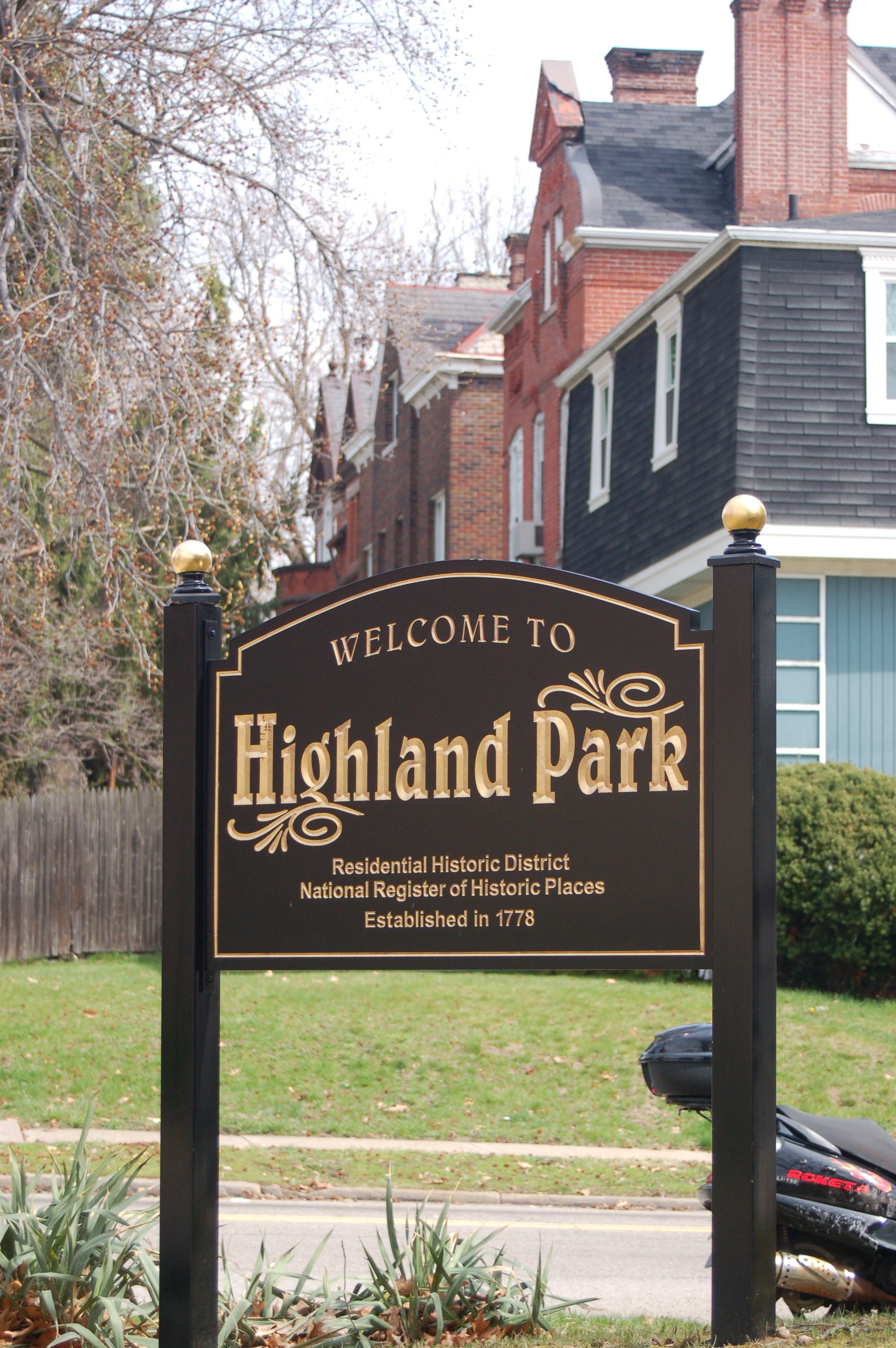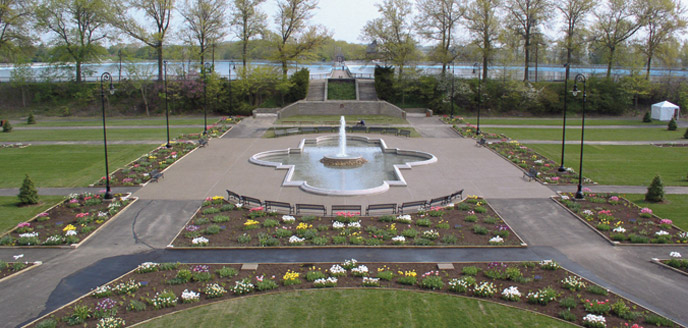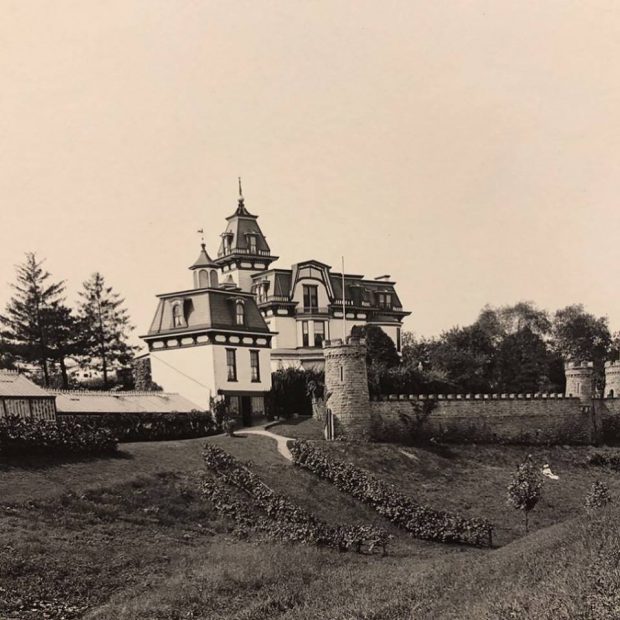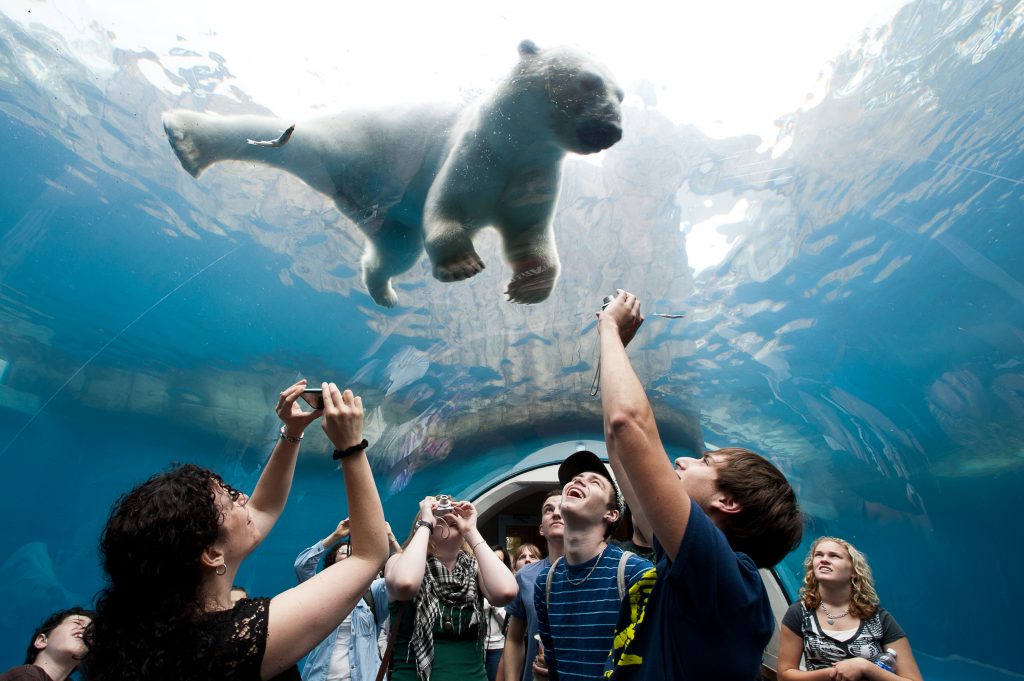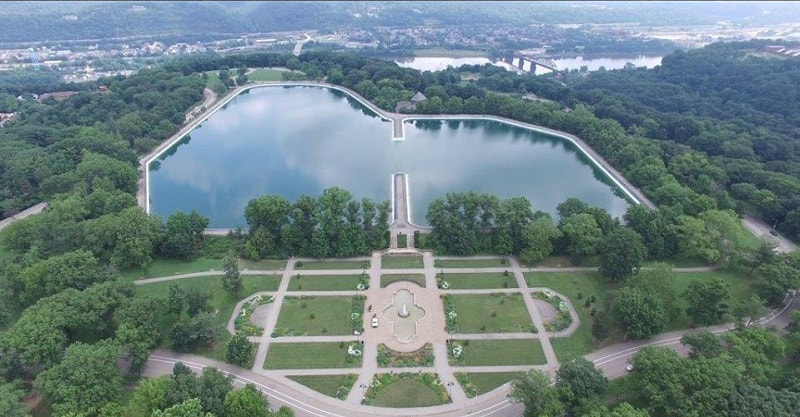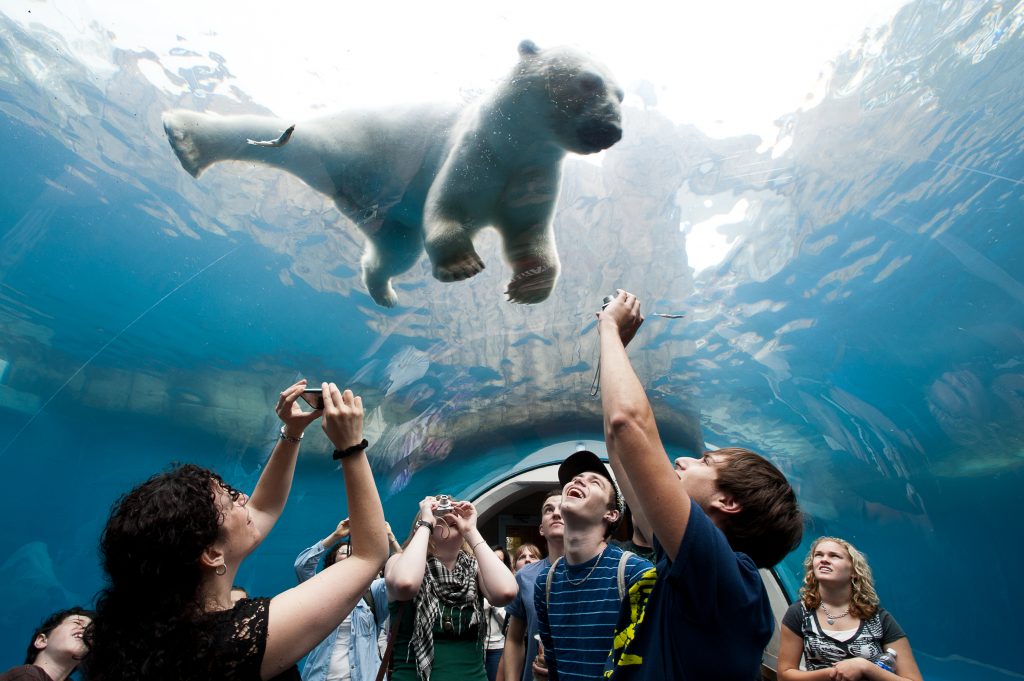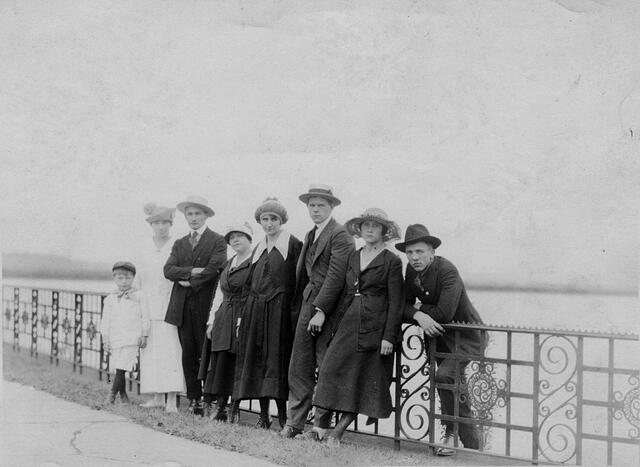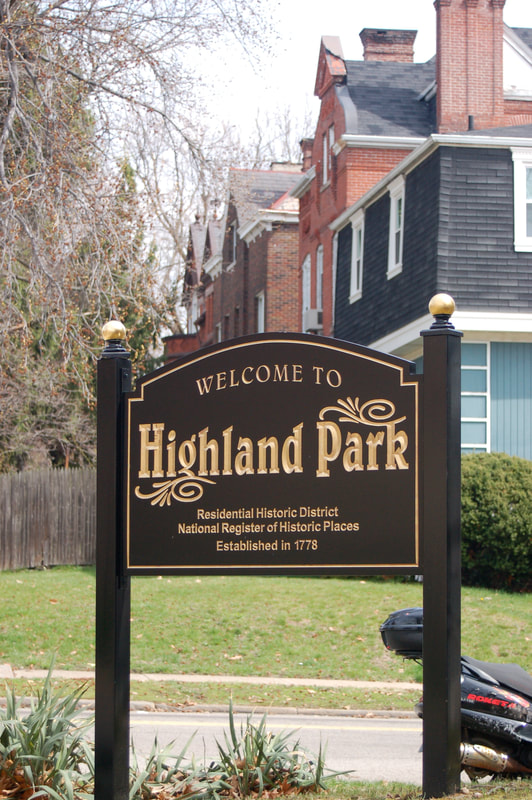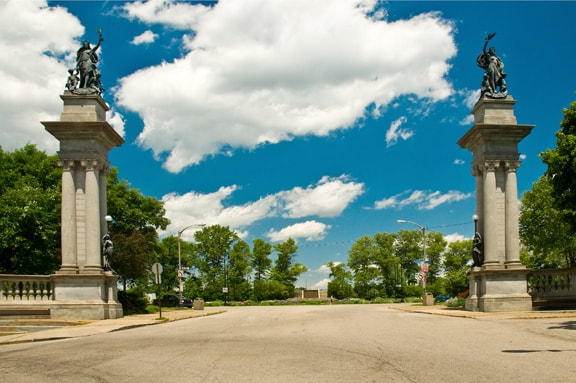Highland Park Pittsburgh PA
|
The Highland Park neighborhood of Pittsburgh has a history built around the principles of leisure and recreation. What started out as a simple reservoir has morphed into one of Pittsburgh’s premier parks: an attraction that excites residents till this day. The community’s food scene is one of Pittsburgh’s best kept secrets, with several restaurants that will make a fan out of even the pickiest of eaters. The homes in the area were uniquely designed to satisfy the needs of city’s early 20th century residents, and each house has its own charm. Today, Highland Park has a reputation of being a quiet, suburban neighborhood, close to Bloomfield, Shadyside, and East Liberty shopping and dining. It is located to the northeast of Downtown Pittsburgh, and its northernmost boundary is the Allegheny River. Highland Park combines the residential and the recreational, and has been a popular spot for Pittsburgh residents for over a century.
|
Content by Nolan Carney
Photo courtesy of hpccpgh.org
Photo courtesy of pittsburghparks.org
|

Ivy blankets the cement walls of a walk through tunnel at Highland Park, crica 1907
Photo courtesy of the New York Public Library Baywood House, also known as King's Estate, was built in 1880 by Alexander King.
Photo courtesey of Iheartpgh.com |
HistoryHighland Park has gone through many changes over the past two centuries. The land’s history is traced all the way back to 1778, when Alexander Negley purchased 278 acres of land along the Allegheny River. The Negley family would further expand their land when, in 1799, Jacob Negley (the son of Alexander Negley) was able to purchase the land adjacent to their property, which was over 400 acres. Jacob, a skilled surveyor, began to design a town plan for the area in and around Highland Park and East Liberty, which is Highland Park’s southern neighbor. In 1837, the Negley’s land was subdivided by county surveyor Robert Hiland, who, according to the Highland Park Community Council, named Hiland Avenue after himself. 30 years later, the city would annex the land, and in 1890, city officials changed “Hiland Avenue” to “Highland Avenue”. During that time, the area was being built around the Greensburg and Pittsburgh Turnpike, now known as Penn Avenue. This was one of the major roadways in the Pittsburgh area, and travelers would often stop and rest in Highland Park while on the way to their destination. This is an important part of the area’s history, and the local economy reflected the demand for rooms and rest. There were many popular bars and inns in the area during the 19th century, and the reputation of the Highland Park as a popular resting point before entering the city of PIttsburgh led to the development of a railroad system that connected Philadelphia to Pittsburgh .
This drew the attention of some of the most affluent men in Pittsburgh, as they wanted to move away from Downtown, but still wanted to remain connected to their factories, as well as the railroads. According to the East Liberty Chamber of Commerce, Henry Clay Frick, Alexander Peacock, Andrew Carnegie, Thomas Carnegie, George Westinghouse, and H. J. Heinz all bought property near the Highland Park/ East Liberty area. Many of the city’s upper middle class began to settle the area as well, and in the late 18th and early 19th century, the demand for new homes skyrocketed. Because of this surge in new residents, many of the homes in Highland Park showcase the architectural styles of the late 1800s and early 1900s. The oldest surviving home in Highland Park dates back to 1860, and from 1860 to 1940, people flocked to the area. The population of Highland Park during this time grew so rapidly, that it went from a sparsely occupied patch of land to one of Pittsburgh’s most affluent areas. Today, the area is still predominantly residential, with bars and restaurants scattered throughout. According to the most recent estimate from the US Census, in 2017, the area had a population of 1,211 residents. |
Things To DoHighland Park has no shortage of things to do. For starters, Highland Park features, you guessed, a park! If you take North Highland Avenue all the way to its northernmost end, you’ll find the beautiful Victorian-style gates welcoming you into the park’s entry garden. The park has a seperate history in and of itself. Before there was a formal park, the area was a reservoir and a green space. The reservoir, built in 1879, was such a popular place to picnic, that the city’s Park Commission made it an official park in 1889. Today, the park is centered around the reservoir, and a walk around Reservoir Drive will reveal a large swimming pool, lake, volleyball courts, hiking trails, and gazebos and hillsides to picnic. The small Carnegie Lake is perfect for summer fishing, and during the fall the whole area is alive with the colors of the season.
If a walk in the park is not your idea of a good time, Highland Park also houses the Pittsburgh Zoo and PPG Aquarium. Opened in 1898, it is one of the oldest zoos in the country. In the beginning, it was more of a menagerie, a place where wild animals were in captivity for exhibition, in structures more like cages than habitats. These were much more common in the late 19th and early 20th century. But, as the times changed, so did the Pittsburgh Zoo . The zoo now incorporates natural habitats for its animals, and takes pride in educating guests on conservation efforts. In 1967, they opened up the first aquarium in Pennsylvania, and the second largest in the country at the time. The PPG Aquarium, located in the back corner of the zoo, is a marvel in its own right. It has many different unique fish tanks and exhibits, including a penguin habitat, a stingray tank (where guests can reach in and pet the stingrays!), and a massive shark tank that stretches from the floor to the ceiling of the three story building. In 2018, the zoo and aquarium were home to over 9,000 animals, including the African Elephant, Red Panda, Black Rhino, and of course, the ever popular Polar Bear. The Pittsburgh Zoo is a great way to spend an afternoon, and offers free tickets on certain days throughout the year. If someone tells you this place doesn’t receive their SEAL of approval, they’d be LION!
|
A family stands on the edge of the Highland Park reservoir walkway, circa 1916-1917
Photo courtesey of PittsburghParks.org The polar bear exhibit at the Pittsburgh Zoo allows visitors to view the animal from both land and water, offering a unique glimpse into the life of the bears
Photo courtesey of American Humane |
|
Customers sit outside Park Bruges, a French-style bistro on Bryant St.
Photo courtesey of Point Brugge A collection of beautiful dishes available at Joseph Tambellini Restaurant
Photo courtesey of JosephTambellini.com |
Food and DrinkHighland Park is a very residential area, and where there’s a lot of people, there’s bound to be some good food as well. Bryant Street is home to many of the area’s food stops, and has a variety of restaurants to choose from. The Applewood Smoke Burger Company serves one of the best burgers in Pittsburgh, and is one of the area’s hidden gems. It is a burger stand tucked away in the back of the Park Place Pub, and the two businesses share the space. They are moderately priced, and offer wings, salads, and tasty options for vegans as well. Right across the street is Park Bruges, a French-style bistro that takes pride in having fresh food and good portions. Although the menu has a lot of options to choose from, the star of the show might be the poutine, a classic Canadian street food that consists of french fries piled high and topped with cheese curds and gravy. The mussels are also a favorite, and are served with fries, bread, and choice of sauce. If you still aren’t sold on the place, Park Bruges offers a variety of different beers on tap, including an expansive selection of Belgian Ales. Also off of Bryant Street is the highly recommended Joseph Tambellini Restaurant. With an old-country feel right out of Italy, this restaurant has a reputation of mixing an uncondescending atmosphere with fine dining cuisine. The lunch and dinner items go above and beyond, and patrons rarely leave disappointed (or hungry!). Joseph Tambellini, owner and head chef, has been working in the restaurant industry since 1979, and his experience has not phased his passion. The desserts are made in-house, and the extensive wine list has something for everybody. Since most of the restaurants in Highland Park are located on or around Bryant Street, they are well within walking distance of Highland Park homes.
|
Highland Park ArchitectureThe history of Highland Park has played a huge role in shaping the architecture of the area. In the “History” section of this post, I touched upon how the railway and turnpike brought upper-middle class (and even a few elites) to the Highland Park area. This is reflected in the homes that still occupy Highland Park. In the late 1800s, a new middle class was beginning to take shape in Pittsburgh. For a while, the area was dominated by a few wealthy businessmen and industrialists, but as the 20th century approached, an upper-middle class began to emerge in the area. According to Pittsburgh area newspaper's website TribLive.com, accountants, managers, salespeople, and other “white collar” professions were increasing in popularity and in profitability, and new homes were being built in order to account for this. Point Breeze, Highland Park, and Squirrel Hill all saw a plethora of new homes being constructed, and although they varied in size and complexity, the homes all catered to the requests of the area’s rising upper-middle class. Intricate homes made of brick and ornate wood line the streets of Highland Park till this day. To meet the current needs of the area’s residents, many of these homes are multi-family units, rented to those who live and work in and around the city limits. The short commute to Downtown Pittsburgh, Oakland, and Bakery Square makes Highland Park an ideal place to call home for all levels of business professionals. Apart from the many early 20th century homes found all over Highland Park, there is also a number of ranch-style homes. According to AntiqueHome.com, Ranch style homes grew in popularity in the 1950s and 1960s, and often feature a single-story, “U” or “L” shape, with an attached garage and a hipped or gabled roof. With the majority of Highland Park homes being built in the early 20th century, driving through the area is always a treat. It is interesting to see how the history of the neighborhood is reflected in the architecture of the homes.
An arial shot of the Highland Park entrance and reservior
Photo courtesy of NextPittsburgh.com and the Pittsburgh Parks Conservancy |
Homes like these are common throughout the Highland Park area
Photo courtesy of Next Pittsburgh An example of a classic ranch-style home
Photo courtesey of ArchitectureStyle.org Throughout the past 200 years, Highland Park has undergone a series of transformations. What started out as farmland has morphed into a neighborhood of over 1,200 residents. The park itself has gone through an equally dramatic transformation; an area originally designated to supply the outskirts of the city with clean water is now an elegant garden and park. Highland Park residents enjoy the seclusion of the suburbs, while not sacrificing the convenience of the city. The community is home to some of the best restaurants in the area, and outdoor fun for all seasons is only a stone’s throw away!
|
